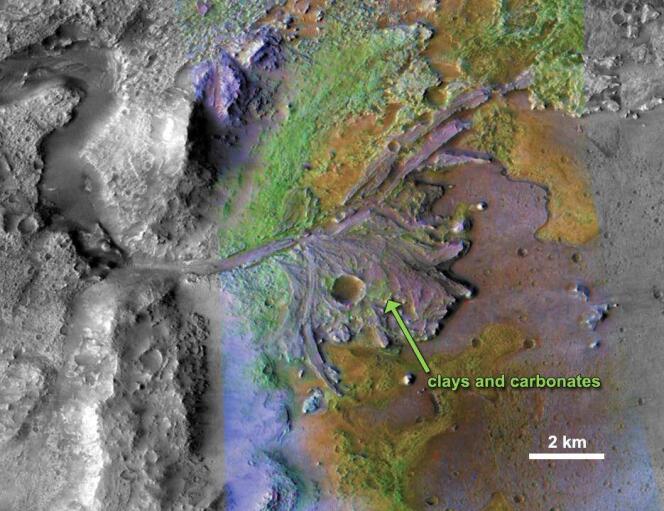


While the icy moons of Jupiter and Saturn contain water, Mars remains dry. Despite dozens of space missions, the Red Planet has yet to provide convincing proof that it conceals significant water reserves beneath its surface.
Yet Earth's little cousin hasn't always been so secretive. Various studies have shown that a little over four billion years ago, it experienced a "watery" era when lakes, rivers and perhaps even oceans could maintain themselves on its soil. Branching valleys and ancient terrains rich in hydrated clays are evidence of this blissful period of abundance.
Subsequently, the loss of part of the Martian atmosphere led to a reduction in the greenhouse effect followed by a gradual disappearance of water. The question is how long this process lasted and under what conditions. This is what the American Space Agency's (NASA) Curiosity and Perseverance spacecraft have been trying to establish since their arrival in 2012 and 2021 in the Gale and Jezero craters. "Lakes occupied these depressions 3.5 or 3.6 billion years ago," explained Nicolas Mangold, Director of Research at the French National Centre for Scientific Research (CNRS) Laboratory of Planetology and Geosciences in Nantes. "By studying the sedimentary and clay deposits left by the former and exploring the ancient river delta that fed the latter, the aim is to determine whether the climate at the time was wet and cold, or dry and hot. The Perseverance rover is also collecting samples, to be brought back to Earth as part of the MSR mission [Mars Sample Return, NASA-European Space Agency (ESA)]. They should provide precise information."
For the moment, things are hazy. If water has flowed on Mars, where has it gone? Was it sucked up into space with the Martian atmosphere or did some of it remain on site, buried underground? Many teams around the world are working to find answers by searching for clues to its presence other than those offered by polar ice caps and glaciers.
As water cannot remain in a liquid state for long on the surface of Mars, these investigations often consist of spotting recent traces of its passage using instruments placed in orbit. This opens the way to all kinds of controversy about how to interpret observations of this world, whose morphology is radically different from that of Earth. "Some of these controversies, such as those concerning gullies – ravines one or two kilometers long, discovered by the hundreds along certain landforms in the early 2000s – have finally been settled," said Susan Conway, a CNRS researcher at the Laboratory of Planetology and Geosciences in Nantes. Her team recently demonstrated in the journal Nature Communications that seasonal deposits of dry ice explain the phenomenon, and not water flows.
You have 25.43% of this article left to read. The rest is for subscribers only.
